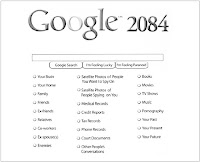Improvements in Academic Performance with technology.
Thoughts on the articles, by Monica J. Orsolini
In the industrial age, our educational design has worked toward standardization-
Put students by chronological age.
Compare them to each other.
This is an old time form of sorting so communities could find laborers and managers. The sorting design is a Darwinism theory. One of the principal functions of this design is to teach children how to behave in groups. The reason for this design is we cannot have a democratic, indeed, civilized, community life unless people have learned how to participate in a disciplined way as part of a group. But- To meet our needs today and in the future, the learning design is a spiritualism/ humanistic approach that may work. Now society needs people to solve problems, take initiative, and offer diverse perspectives.
In “Of Luddites, Learning and Life,” by Neil Postman, he says
I have, for example, no hostility toward new technologies and certainly no wish to destroy them, especially those technologies, like computers, that have captured the imagination of educators. Of course, I am not enthusiastic about them, either. I am indifferent to them. And the reason I am indifferent to them is that, in my view, they have nothing whatever to do with the fundamental problems we have to solve in schooling our young.
If we teach with the idea that TIME is NOT a constant, we would:
Allow children as much time as they need to master a topic. Each child moves toward mastering a skill or topic at a different rate.
Allow achievement to vary from child to child without ill consequences. Grades may be out-of-date.
Allow children to progress at different rates. Base the assessment on what the child knows.
Require learning focus educational systems in the schools. Then the assessment would measure attainment of material.
The Learning Focused Paradigm
The teacher is the guide on the side.
Use fellow learners such as peers, parents, community, organizations and national resources.
Different learning requirements need different learning procedures. Do not focus on technology; focus on the method of teaching. We need to remember that new technologies may not always solve significant problems or any problem at all.
Procedural task need computer based tutorial
Complex Cognitive task may need computer based simulator
Developing deep understanding requires direct dialogue.
9/9/10



